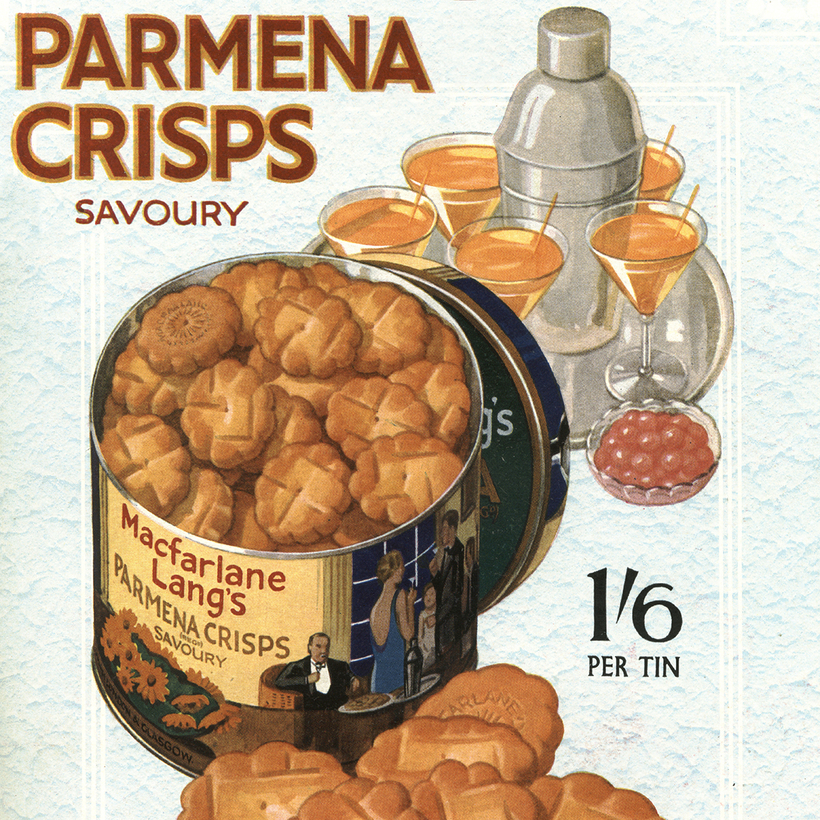When India’s prime minister, Narendra Modi, declared a last-minute lockdown in March, most of the country’s workers found themselves stranded in cities without food or shelter. With buses and trains all shut down, they were forced to walk home to their villages hundreds of miles away in the heat. For days and weeks they trekked with scarcely anything to eat. Many survived on just water and biscuits.
The earliest biscuits were hard bread rusks, baked twice to make them last longer. The ancient Greeks and Romans soaked these rusks in water and dipped them into soups and vegetable stews. Muslim confectioners were the first to add sugar to the dough and transform a main-course item into an indulgence. During the Renaissance, egg-leavened biscuits were consumed as both appetizers and desserts. Bartolomeo Platina, perhaps the West’s first food historian, recommended them for allaying “whatever discomforts there are.”
Biscuits entered British cuisine as a remedy for indigestion, but soon became a staple for ship crews on voyages. Industrial production circulated them to faraway colonies, though it was only in the last century that they evolved into a cheap comfort food.
Snack Time
Lizzie Collingham’s The Biscuit is a condensed history of the snack, with charming asides on cousin sweetmeats such as wafers, waffles, and gingerbread. Collingham patiently sorts through the dizzying varieties of biscuits: the stately Maries, the glazed Garibaldis, the fibrous Anzacs, and the crusty Kit Kats that are now sold as chocolate bars. She recounts tales of Dutch settlers along the Hudson trading baked goods with local Native Americans in exchange for furs, and Boers loading up on biscuit rusks before traveling to the African hinterland. We read how sponge finger biscuits were once served to mourners at British funerals, and the how the heart of the novelist Thomas Hardy was apparently stored in a biscuit tin.

Every few pages, like a filling of sorts, there is a recipe for a new cake or cookie: perfect for stress baking during the lockdown.
The book also covers the production side of the story, with accounts of workers in 19th-century factories slaving away for long hours and being fired for so much as stealing a single biscuit. These days, biscuits are churned out of automated ovens and moved with forklifts; on a visit to a McVitie’s factory unit in the 2000s, the writer Alain de Botton observed that the majority of employees had nothing to do with “anything one might eat.”
Bartolomeo Platina, perhaps the West’s first food historian, recommended biscuits for allaying “whatever discomforts there are.”
Once upon a time, spicy biscuits were dunked into wine, but the snack’s current reputation as a British teatime supplement has much to do with their falling prices in the 1930s, when the working classes could finally afford the sugary treats. Biscuits and a hot cuppa became embedded in the wartime propaganda machinery as a symbol of the indomitable British fighting spirit against the Nazis.
Collingham misses a trick by touting biscuits as “a very British” indulgence. Page after page is devoted to the inner workings of such British manufacturers as Peek Frean and Huntley & Palmers, but Parle Products, a Bombay firm which claims to produce the world’s best-selling biscuit by volume, is swiftly dispensed with in a single sentence. We hear from a Glasgow woman anxiously stockpiling her rations before a wartime raid, but not from the daily-wage laborer in any Indian town who still gets by on a glass of chai and a handful of biscuits.
Biscuits are one of the world’s truly egalitarian edibles, part of the national mythologies of India, South Africa, Australia, Kenya, Jamaica. They stopped being very British years ago, around the same time English ceased to be a language spoken only by the English.
Abhrajyoti Chakraborty is a New Delhi–based writer

